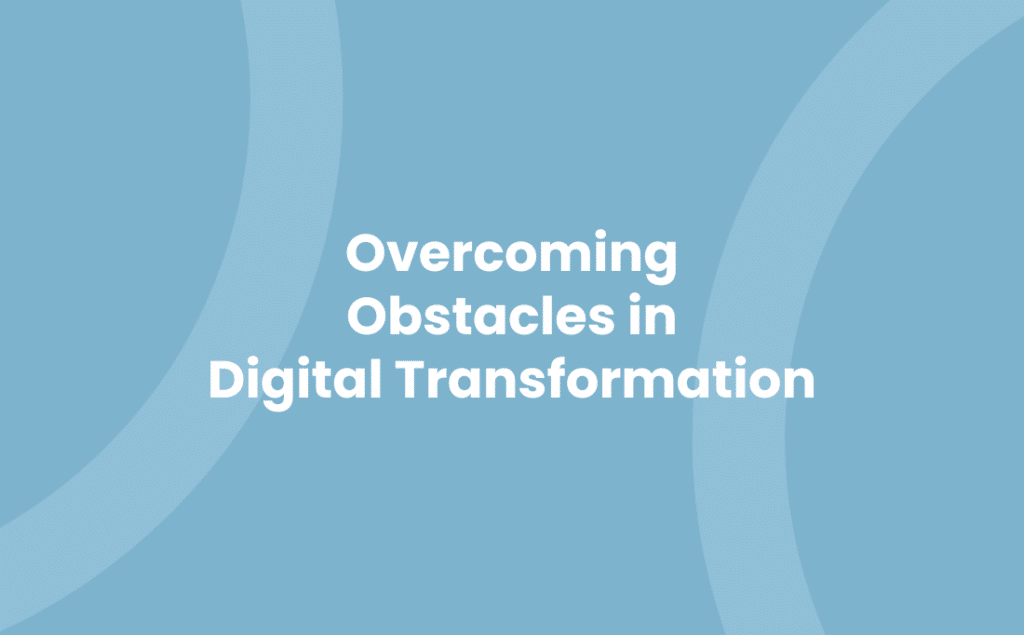In the fast-paced digital era, staying ahead of the curve is no easy feat. That’s where digital transformation and agile methodologies come into play. They’re not just buzzwords, they’re pivotal strategies that can redefine your business landscape.
Digital transformation is more than just a shift in technology. It’s a radical rethinking of how an organisation uses technology, people and processes to fundamentally change business performance. On the other hand, agile methodologies offer a lightweight framework for helping teams maintain focus on the rapid delivery of business value.
As you delve into this article, you’ll explore how these two concepts intertwine and why they’re critical in today’s dynamic business environment. Get ready for a journey of discovery that could revolutionise the way you do business.
Understanding Digital Transformation
In the heart of the digitally-driven modern business landscape, digital transformation paves a comprehensive path. It’s much more than tech upgrades or implementing software capabilities. Instead, digital transformation is a holistic shift that redefines how your organisation leverages technology, systems, and processes. It’s about creating a digital-centric mindset and incorporating it across all business operations, only to lead to consistent efficiency and innovation.
To shed light on it, think of digital transformation as your business’s journey into a zone where every process, every operation, each piece of customer interaction is guided by tech-enablement. Embracing this digital revolution, you might find your organisation skilfully navigating the complexities of dynamic market demands, all while staying true to delivering optimal value to your clients.
Yet, the realm of digital transformation isn’t some one-size-fits-all solution. It’s thoroughly tailored, meticulously designed to enhance the unique needs of each business. Whether it’s revamping your communication pathways or enabling hands-free operations, the digital transformation extends to encompass each facet of your business that could potentially benefit from a digital-first approach.
Significantly, the journey towards digital transformation isn’t just about adopting the latest tech trends. It’s about understanding what works for your business, what does not, and then implementing change towards a forward-thinking, customer-centric business approach. What is essential is to have a bespoke strategy underpinning your transition to ensure that your business thrives in this ever-changing, digitally-empowered business landscape.
In essence, understanding digital transformation requires you to delve into the realm of buried potential – a place where technology and innovation intertwine to evolve your business dynamics. It’s about seeking more than just solutions – it’s about finding the right tools, the right approach, and the right mindset to create a digital legacy for your business. With a well-crafted digital transformation strategy, you unlock the secrets of unrivalled performance, sustainability, and growth, robust enough to propel your business towards an untapped future, full of endless possibilities.
Interactive, dynamic, and fast-paced, the digital transformation journey is an exercise in continuous improvement. A process that has agile methodologies at its core. This constant evolution – fuelled by digital innovation and agility – is what optimises operational excellence and enhances customer satisfaction, paving the way for a sustainable and successful future for SMEs in the UK.
Agile Methodologies and Their Role
Agile methodologies play a pivotal part in supporting digital transformation efforts, making your business not just reactive but proactive in the increasingly digital world. This approach, reliant on the principles of collaboration, flexibility, continual improvement and customer-first approach, supports businesses in the UK, particularly SMEs, in achieving their digital transformation objectives.
For one, the agile methodology’s emphasis on collaboration encapsulates the essence of collective decision-making. This fosters an environment of shared understanding, making sure all team members understand their contributions to the grander picture. By working cohesively, you’re creating a structure that propels the momentum of digital transformation.
Furthermore, flexibility is at the heart of agile methodologies. It’s a direct counter to traditional management philosophies that favour rigid systems and set-in-stone project development schemes. This built-in adaptability allows your business to respond effectively to market changes or customer behaviour shifts which are imperative in the ever-evolving digital sphere.
Agile methodologies also advocate for regular, iterative improvements. This favours the drive for continual enhancement that digital transformation requires. By adopting this method, you’re encouraging regular cycles of evaluation and adjustment, promoting a mindset of constant advancement necessary to keep pace in our digital age.
Lastly, agile approaches centre around customer satisfaction. In the context of digital transformation, this customer-first approach directly aligns with tailoring business operations and services to meet specific customer needs. By iterative testing and adjustments, this methodology ensures that each step you make gets you closer to customer satisfaction, the ultimate end goal of digital transformation.
All in all, agile methodologies, through their focus on collaboration, flexibility, continual improvement, and a customer-first approach, play a crucial role in ensuring the success of your digital transformation endeavours.
The Symbiosis of Digital Transformation and Agile Methodologies
Digital transformation thrives on agile foundations. Agile methodologies provide an approach that promotes continuous adaptation and iterative enhancements, serving as a catalyst for effective digital change.
Agile methodologies proactively accommodate the dynamic nature of digital transformation. They support rapid alterations based on real-time feedback, thus accelerating digital processes. Teams operating under Agile become more responsive and adaptable. Greater flexibility, a key trait of Agile, eases the transition to new digital solutions. For instance, adopting cloud-based software becomes a smoother process under an agile framework.
Collaboration is at the heart of Agile methodologies, a trait that digital transformation greatly benefits from. Cross-functional Agile teams unite to share expertise, drive innovation, and solve complex challenges. This cooperative attribute helps organisations break down silos and create an integrated digital environment, enhancing service delivery and customer experiences.
Moreover, Agile fosters iterative development, a crucial element in successful digital transformation. By delivering projects bit by bit, firms get to review progress regularly, giving them the luxury to fine-tune digital strategies in response to real-time demands and feedback. Companies like Google, Spotify, and Amazon employ similar approaches, making frequent small updates to dwell in a customer-centric digital marketplace.
Additionally, Agile methodologies ensure a focus on end-user needs throughout the digital transformation journey. They promote direct, continuous customer involvement, keeping their needs as a central aspect of the decision-making process. The result is a digital ecosystem built on valuable customer insights, fuelling an ambition to deliver superior digital experiences.
Hence, Agile methods and digital transformation show perfect symbiosis. Interrelating the two streamlines the shift to digital operations. They offer a customer-driven, highly flexible, and collaborative approach, reinforcing the momentum towards achieving digital excellence in today’s rapidly evolving business landscape. Remember, robust digital transformation counts on agile methodologies for its success. Make sure your business does the same.
The Future of Digital Transformation and Agile Methodologies
The future holds new promises and fresh challenges for digital transformation and agile methodologies. Digital transformation, coupled with agile methodologies, provides a potent combination that is poised to dominate the future business landscape.
Let’s delve into how these two factors are shaping the future. Agile methodologies aim to facilitate the digital journey, bridging the gap between traditional modes of operation and innovative digital models. Each iteration in Agile practices fosters continuous learning, resulting in better, faster adaptation to new technologies. This adaptation is crucial in managing the uncertainties and constant flux of the digital era.
The digital transformation path becomes less daunting as agile methodologies streamline the process. Agile unlocks the secrets of seamless integration, enhancing the overall experience for customers and employees alike. It helps businesses to become more flexible, resilient, and responsive. Streamlined operations, better communication, increased productivity, and improved customer satisfaction are no longer dreams but achievable objectives.
Moreover, the ever-evolving technological landscape demands businesses to stay ahead of the curve. Agile methodologies will play an increasingly critical role in this aspect. Agile will facilitate rapid adjustments to changes, enabling businesses to quickly adapt and innovate in response to new trends and demands in the digital world.
In the realm of digital transformation, agile methodologies can pave the way for sustained growth and success. Continuous adaptation, iterative enhancements, and collaboration are the cornerstone for creating a customer-centric digital ecosystem. Embracing these methodologies underpins an organisation’s digital transformation journey, fostering innovation, problem-solving, and enhancing service delivery.
The future of digital transformation and agile methodologies looks toward adapting and thriving in an ever-changing digital world. Rest assured, by incorporating these strategies, your business will not only survive but thrive in the world of digitisation.
Barriers to Digital Transformation and Agile Methodologies
While digital transformation and agile methodologies bestow many benefits, several obstacles may obstruct their adoption and efficacy in a business environment. Here, we delve into these impediments, emphasising three specific barriers: legacy systems, lack of skilled personnel, and resistance to change.
- Legacy Systems: For many businesses, outdated systems hinder the journey towards a digitised, agile setting. Old infrastructures, designed decades ago before modern digital technology emerged, are typically incompatible with new technologies. These legacy systems, often deeply integrated into business operations, demand extensive resources, time, and expertise for modernisation. Hence, this forms the first notable hurdle on your pathway to full digital agility.
- Lack of Skilled Personnel: The second barrier emerges from a scarcity of digitally adept, agile-savvy professionals. As enablers of digital transformation, these experts guide your establishment towards agility. A deficiency in such talent broadens the gap between traditional methods and new-age solutions. Remember, having proficient team members is paramount for navigating the digital realm. Training existing staff or recruiting capable personnel becomes crucial, yet it’s often a challenge for companies, particularly SMEs, due to resource constraints.
- Resistance to Change: Lastly, internal resistance often sabotages the shift to agile methodologies, reflecting employees’ hesitance about leaving their comfort zones. Workers may fear job loss due to automation or dread the learning curve associated with new technologies and practices. Consequently, managing this resistance, strategising change, and ensuring employees’ support and understanding of the transition to agile operations becomes another obstacle to overcome.
These barriers represent significant challenges in adopting digital transformation and agile methodologies. Nonetheless, businesses recognising these obstacles can strategise appropriate measures to combat them, thus enhancing their chances of success amidst the rapidly transforming digital landscape.
Conclusion
So, you’ve seen how digital transformation and agile methodologies can give your business the edge in today’s fast-paced digital world. You’ve delved into the unique relationship between these two elements, understanding how they work together to spur continuous innovation and customer engagement. You’ve also identified the barriers that might be standing in your way – from outdated systems to a shortage of skilled staff and even resistance to change. It’s clear that overcoming these hurdles is key to fully harnessing the power of digital agility. Remember, it’s not just about adopting new technologies or processes; it’s about fostering a culture of adaptability and customer-centricity. By doing so, you’ll be well-equipped to navigate the ever-changing digital landscape and propel your business to new heights.


